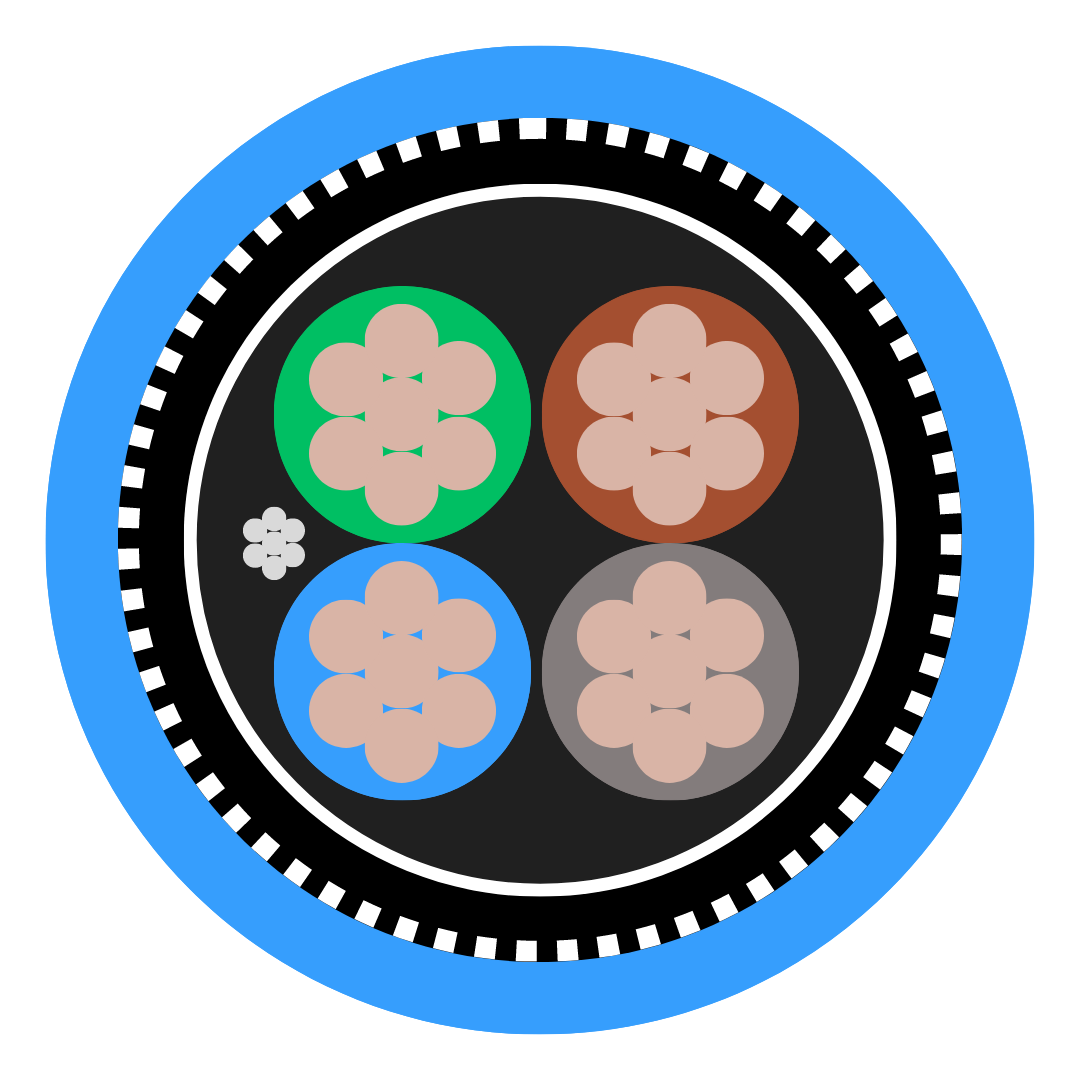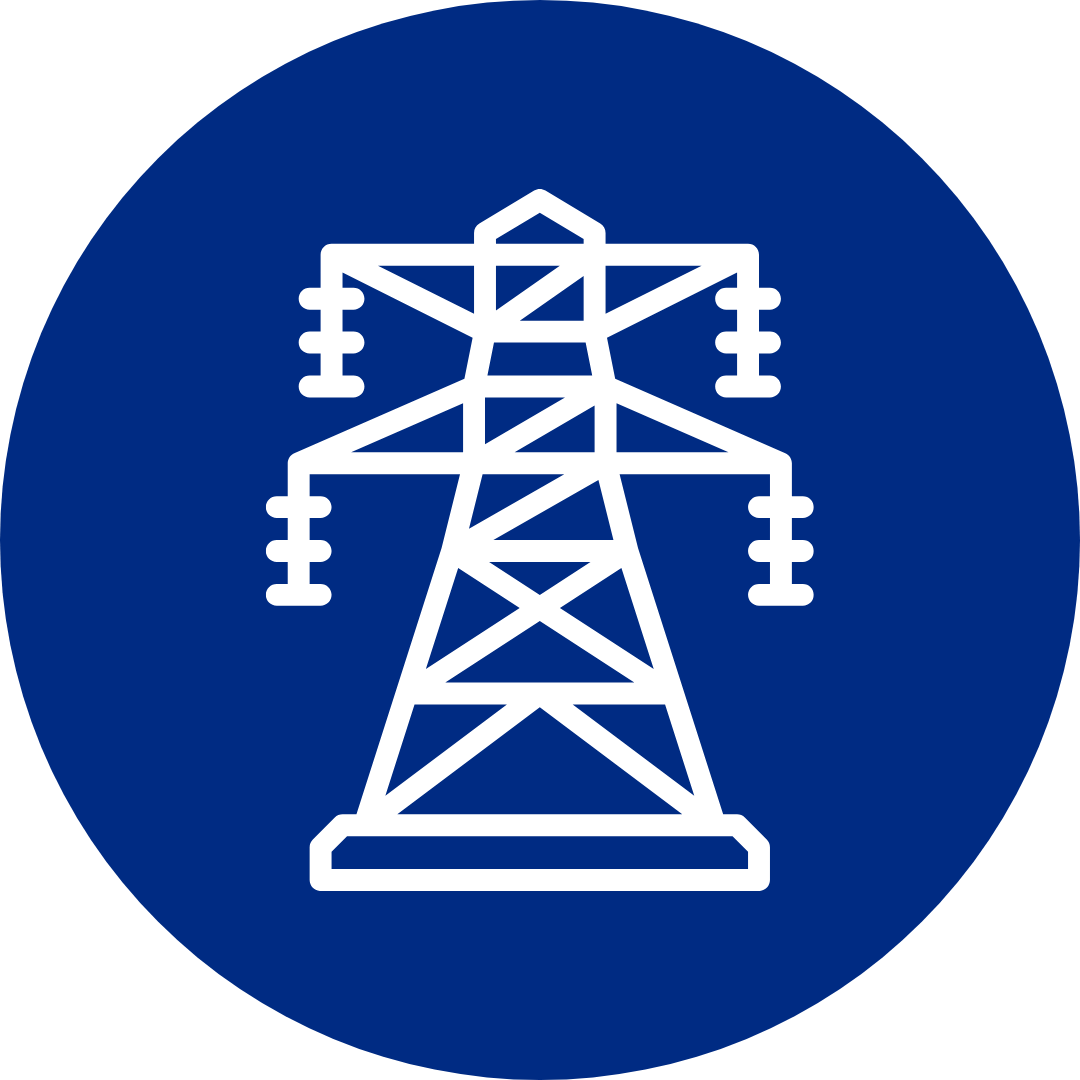At Cableworld, we understand how essential it is to choose the right cable for your specific needs. Whether you're working with AC or DC power, the type of cable you use has a direct impact on efficiency, safety, and long-term performance.
As a trusted supplier of high-quality AC and DC cables, we are committed to helping you make informed decisions that enhance the performance of your electrical systems.
In this guide, we’ll walk you through the key differences between AC (Alternating Current) and DC (Direct Current), their common uses, and why selecting the right cable for each is crucial for the success of your project.
What is AC and DC Power?
AC (Alternating Current)
Alternating current (AC) is a type of electrical current that changes direction periodically, typically flowing in a sinusoidal wave.
This back-and-forth movement of electrons allows AC power to be efficiently transmitted over long distances, making it the standard for power grids and most household electrical systems.
Common applications of AC power include lighting, large appliances like refrigerators and air conditioning units, and powering residential and commercial buildings.
DC (Direct Current)
Direct current (DC), on the other hand, flows in a single, consistent direction. This stable, one-way current makes DC particularly well-suited for applications that require steady and reliable power, such as batteries, solar power systems, and electronic devices like laptops and smartphones.
DC power is also increasingly used in renewable energy systems, where it is vital for efficient energy storage and transmission.
Understanding these fundamental differences between AC and DC is the first step in choosing the correct cable for your specific application.
AC vs DC: Key Differences in Power Transmission
Difference Between AC and DC Power Flow
AC power alternates direction as it flows, switching back and forth in cycles. In most countries, this occurs 50 or 60 times per second (known as 50Hz or 60Hz).
This alternating nature makes AC power ideal for long-distance transmission because it can be stepped up to higher voltages, minimising energy loss.
DC power, on the other hand, flows steadily in one direction, making it highly efficient for powering devices that require consistent energy input. However, DC power is less efficient for long-distance transmission, which is why it's primarily used in localised applications like batteries, electronics, and renewable energy systems.
AC and DC Voltage Differences
The voltage in an AC system constantly fluctuates, rising and falling in a wave-like pattern. In contrast, DC voltage remains steady, maintaining a consistent level throughout the flow of electricity.
For example, most household systems operate on 120 or 230 volts AC, while DC voltage is commonly found in systems like battery-powered devices and renewable energy installations, often at lower voltages such as 12V, 24V, or 48V.
In industrial settings, high-voltage AC is preferred for grid-level transmission, while DC is increasingly used for energy storage and specialised applications like electric vehicles.
AC or DC: Which is More Common?
AC power dominates the global power grid due to its efficiency in transmitting electricity over long distances and its compatibility with household and commercial appliances. Power stations generate AC, which is distributed through national grids to homes and businesses.
However, DC power is becoming more prominent in modern technology, particularly in renewable energy applications like solar panels and electric vehicle (EV) charging stations, where energy is stored and used in DC form.
DC is also critical in electronics, data centres, and portable devices where stable, low-voltage power is needed.
Applications of AC and DC Cables
Uses of AC Cables
AC cables are widely used in residential, commercial, and industrial settings due to the prevalence of alternating current in national power grids. In homes, AC cables are essential for powering appliances, lighting, and electrical outlets.
In commercial buildings, they support complex electrical systems, including heating, ventilation, and air conditioning (HVAC) units, as well as lighting and computer networks.
Power grids rely heavily on AC cables for transmitting electricity over long distances, from power stations to end users. The flexibility and efficiency of AC cables in handling the alternating nature of the current make them ideal for diverse applications where consistent power distribution is critical.
Uses of DC Cables
DC cables are vital in applications that require direct current, especially in renewable energy systems like solar panels and wind turbines, where energy is generated and stored as DC power.
They are also crucial in electric vehicles (EVs), powering both the battery systems and the electronics that control the vehicle's operation. In industrial settings, DC cables are often used in machinery that requires precise control, such as motors and automated systems.
In these energy-efficient systems, DC cables are preferred because they deliver a steady, uninterrupted flow of power, minimising energy losses and optimising performance.
DC vs AC Cables: Which Should You Use?
When deciding between AC and DC cables, it’s essential to evaluate the specific needs of your application. Consider the type of current required—AC for most residential and commercial applications or DC for renewable energy systems, battery storage, and EVs.
Voltage requirements also play a key role; AC is often used for higher voltage systems, while DC is typically preferred for low-voltage, high-current applications. The installation environment is another crucial factor.
For example, AC cables might be better suited for grid-level power distribution, while DC cables may be more appropriate for outdoor solar installations that require durability and weather resistance.
Benefits of Using the Right Cables for AC and DC Power
Efficiency and Safety
Using the correct cable for either AC or DC power ensures that energy is transmitted efficiently, minimising energy losses. AC and DC cables are specifically designed to handle the characteristics of each current type—AC's alternating flow and DC's steady flow.
When the right cable is used, it maximises performance, reduces energy waste, and lowers the risk of overheating. Safety is another critical factor. Choosing the proper cable type helps to prevent issues such as short circuits, electrical fires, or equipment failure, especially in high-voltage or high-current applications.
This is particularly important in systems where the risk of electrical hazards is greater, like industrial settings or renewable energy installations.
Long-Term Performance and Durability
The right cables are not only efficient but also improve the longevity and reliability of your systems. Cables designed for specific currents—whether AC or DC—are built to withstand the unique stresses of each power type. This includes protection against environmental factors like heat, moisture, or UV exposure.
High-quality AC and DC cables are engineered to reduce wear and tear over time, decreasing the likelihood of system breakdowns and the need for frequent maintenance. By investing in the right cables, you ensure your system runs smoothly and cost-effectively, minimising long-term operational expenses.
AC & DC FAQs
What is the difference between AC and DC power?
AC (Alternating Current) power alternates direction periodically, while DC (Direct Current) power flows consistently in one direction.
What are the main differences between AC and DC cables?
AC cables are designed to manage alternating current flow, handling the fluctuations in direction and voltage. DC cables, on the other hand, are built to handle the steady, constant flow of direct current, often with higher levels of current.
Where are AC cables commonly used?
AC cables are typically used in residential wiring, commercial buildings, and grid power applications, where alternating current is the standard for power distribution.
Where are DC cables typically required?
DC cables are essential for renewable energy systems (such as solar panel setups), electric vehicles, and battery storage systems that rely on direct current.
Can I use AC cables for DC systems or vice versa?
While it’s technically possible to use AC cables in DC systems and vice versa, it’s not recommended. Each type of cable is optimised for its respective current and using the wrong cable can reduce performance and safety.
How do I choose the right cable for my application?
Choosing the right cable depends on several factors, including the type of current (AC or DC), voltage levels, environmental conditions, and your system’s power requirements. Consulting with an expert can ensure you make the right choice.
What safety standards should AC and DC cables meet?
AC and DC cables should meet relevant international safety standards, such as BS7671 or IEC standards, to ensure safe, efficient, and reliable operation.
What happens if I use the wrong cable type in my system?
Using the wrong cable type can result in poor power transmission, increased energy losses, and serious safety hazards like overheating, electrical fires, or system failures. It’s essential to use the correct cable to avoid these risks.
Alarm Cable
Arctic Grade Cable
Armoured Cable
Audio & Speaker Cable
Auto Cable
Bare Copper
Belden Equivalent Cable
Co-axial Cable
Data Cable
DC Telecom Cable
Defence Standard Cable
Emergency Lighting & Fire Detection Cable
EV Cable
Festoon
![Loose Tube Fibre Cross Section]()
Fixed Wiring PVC & LSOH Cable
Flatform
Flexible Control Cable
Flexible PVC Cable
Flexible Rubber Cable
General Wiring Cable PVC & LSOH
High Temperature Cable
High Voltage Cable
![5308 p1 t2 cat Cross Section]()
LSOH Flexible Cable
Medium Voltage Cable
NYY & N2XH Cable
Protected Wiring Cable
Silicone Cable
Solar Cable
Split Concentric Cable
Spiral Cable
Temporary Power Cable
Tri-Rated Cable
Welding Cable
Alarm Cable
Arctic Grade Cable
Armoured Cable
Audio & Speaker Cable
Auto Cable
Bare Copper
Belden Equivalent Cable
Co-axial Cable
Data Cable
DC Telecom Cable
Defence Standard Cable
Emergency Lighting & Fire Detection Cable
EV Cable
Festoon
![Loose Tube Fibre Cross Section]()
Fixed Wiring PVC & LSOH Cable
Flatform
Flexible Control Cable
Flexible PVC Cable
Flexible Rubber Cable
General Wiring Cable PVC & LSOH
High Temperature Cable
High Voltage Cable
![5308 p1 t2 cat Cross Section]()
LSOH Flexible Cable
Medium Voltage Cable
NYY & N2XH Cable
PAS - BS5308 Instrumentation Cable
Protected Wiring Cable
RS-232 Cable
RS-485 Cable
Silicone Cable
Solar Cable
Split Concentric Cable
Spiral Cable
Telephone Cable
Traffic Signal Cables
Temporary Power Cable
Tri-Rated Cable
Welding Cable
Airports
Automation & Process Control
![Automotive]()
Building & Construction
Communication & Telecommunication
Data Centres
Defence
![DNO 1]()
E-Mobility
Food & Beverage
Marine & Offshore
Mining, Drilling & Tunnelling
OEMs
Oil, Gas & Petrochemical
Rail & Metro
Renewable Energy
Switchgear
Power
Water Treatment













































